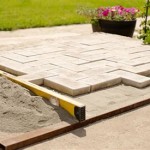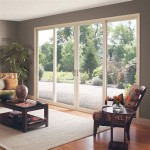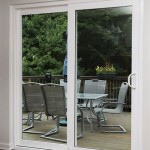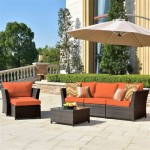DIY Wood Patio Chairs: A Comprehensive Guide
Creating one's own patio furniture offers a rewarding experience, combining practicality with personal expression. Building wooden patio chairs allows for customization, cost savings, and the satisfaction of crafting functional pieces. This article provides a detailed exposition of the process, encompassing design considerations, material selection, construction techniques, and finishing options.
I. Design Considerations and Planning
Before commencing any construction, careful planning is paramount. This involves considering the desired aesthetic, functional requirements, and available space. The design phase necessitates a thorough understanding of chair anatomy and ergonomic principles.
A.
Chair Anatomy:
A typical patio chair comprises several key components: the seat, backrest, legs, and armrests (optional). The seat provides the primary support for the occupant, and its dimensions should be appropriate for comfortable seating. The backrest provides lumbar support and contributes to overall comfort. Legs constitute the supporting structure, ensuring stability and preventing tipping. Armrests, if included, offer additional comfort and support for the arms and shoulders.B.
Ergonomic Principles:
Proper ergonomics are crucial for ensuring comfort and preventing strain. Seat height should allow the occupant's feet to rest comfortably on the ground. Backrest angle should provide adequate lumbar support, typically between 100 and 110 degrees. Seat depth should allow for sufficient thigh support without restricting circulation behind the knees. Armrest height should allow the shoulders to relax without hunching or straining.C.
Design Styles:
Numerous design styles can be adapted for wooden patio chairs, ranging from classic Adirondack chairs to contemporary minimalist designs. Adirondack chairs are characterized by their angled backrests and wide seats, providing a relaxed lounging experience. Modern designs often feature clean lines, geometric shapes, and a focus on simplicity. Rocking chairs offer gentle motion and are suitable for relaxation. The choice of design style should align with one's personal preferences and the overall aesthetic of the patio or outdoor space.D.
Blueprint and Material List:
Once a design is finalized, a detailed blueprint should be created. This blueprint should include precise measurements for all components, as well as angles and joinery details. A comprehensive material list should be compiled, specifying the type and quantity of wood, fasteners, and finishing products required. This list serves as a crucial reference during the procurement and construction phases.E.
Space Considerations:
The available space on the patio or deck should be carefully considered when determining the size and number of chairs to be built. Overcrowding can detract from the aesthetic appeal and limit functionality. Measure the available space accurately and plan the layout to ensure comfortable movement and access.II. Material Selection and Preparation
The choice of wood is a critical factor influencing the durability, appearance, and longevity of the patio chairs. Selecting appropriate wood and preparing it correctly are essential for a successful project.
A.
Wood Types:
Several wood types are suitable for outdoor furniture construction. These include:a)
Cedar:
Naturally resistant to rot and insects, making it an excellent choice for outdoor applications. Cedar is relatively lightweight and easy to work with, and it possesses a distinctive aroma.b)
Redwood:
Similar to cedar in terms of durability and insect resistance. Redwood boasts a rich reddish-brown color and a straight grain pattern.c)
Teak:
A premium hardwood renowned for its exceptional durability and resistance to weathering. Teak is naturally oily, which helps to repel water and prevent cracking. However, teak is more expensive than other options.d)
Pressure-Treated Pine:
Chemically treated to resist rot and insects. Pressure-treated pine is a more affordable option, but it requires careful handling and disposal due to the chemicals used in the treatment process.e)
Cypress
: Naturally durable and resistant to decay. It is a lighter and softer wood than Teak, but still a solid choice. Cypress also accepts paint and stain well.B.
Wood Grading:
Wood is graded based on its appearance and structural integrity. For patio furniture construction, select wood that is free from knots, cracks, and other defects. Avoid using wood that is warped or twisted, as this can compromise the stability of the chairs.C.
Wood Preparation:
Before commencing construction, the wood should be properly prepared. This includes:a)
Kiln-Drying
: Ensure that the wood is properly dried to the appropriate moisture content. This reduces the risk of warping, cracking, and splitting after the chairs are assembled.b)
Planing and Jointing
: Plane the wood to achieve smooth, consistent surfaces and accurate dimensions. Jointing is used to create straight edges that are essential for tight-fitting joints.c)
Sanding
: Sand all surfaces of the wood to remove imperfections and create a smooth finish. Start with a coarse grit sandpaper (e.g., 80 grit) and gradually progress to finer grits (e.g., 120 grit, 220 grit). Sanding is crucial for achieving a professional-looking finish.D.
Fasteners:
Select fasteners that are designed for outdoor use and are resistant to corrosion. Stainless steel screws and bolts are ideal choices. Galvanized nails can also be used, but they may not provide the same level of corrosion resistance as stainless steel.III. Construction Techniques and Assembly
The construction process involves cutting, shaping, and joining the various components of the patio chairs. Accurate measurements, precise cuts, and strong joinery are essential for creating durable and aesthetically pleasing furniture.
A.
Cutting and Shaping:
Use a circular saw, jigsaw, or bandsaw to cut the wood to the dimensions specified in the blueprint. Ensure that all cuts are square and accurate. Use a router or sander to shape the edges of the wood as desired. Rounding over sharp edges can enhance comfort and prevent splintering. Power tools such as a router or spindle sander can make this process much easier and accurate.B.
Joinery Techniques:
Several joinery techniques can be used to assemble wooden patio chairs. Common choices include:a)
Screws:
Screws are the simplest and most common method of joining wood. They are easy to install and provide adequate strength for most applications. Pre-drill pilot holes to prevent the wood from splitting.b)
Bolts:
Bolts offer greater strength than screws and are often used for structural connections. Use washers and nuts to secure the bolts in place.c)
Mortise and Tenon Joints:
A classic joinery technique that provides exceptional strength and stability. Mortise and tenon joints involve cutting a mortise (a hole) into one piece of wood and a tenon (a protruding piece) into another. The tenon is then inserted into the mortise and secured with glue or pegs.d)
Dovetail Joints:
Another strong and visually appealing joinery technique. Dovetail joints involve interlocking wedge-shaped pins and tails that create a mechanical lock. These are often used in drawer construction or where you want a strong, showy joint.e)
Pocket Hole Joinery:
Quick and efficient for joining two pieces of wood together. Pocket holes are drilled at an angle and special screws are driven into the hole to connect the wood.C.
Assembly Process:
Assemble the various components of the chair according to the blueprint. Start by assembling the legs and seat frame. Then, attach the backrest and armrests (if applicable). Ensure that all joints are tight and secure. Use wood glue in conjunction with mechanical fasteners to enhance the strength of the joints. Clamps are helpful for holding the pieces together while the glue dries.D.
Reinforcement:
For added stability, consider reinforcing the joints with corner blocks or metal brackets. Corner blocks are small pieces of wood that are glued and screwed into the corners of the frame. Metal brackets provide additional support and can be used to strengthen weak spots.IV. Finishing and Protection
The finishing process protects the wood from weathering, enhances its appearance, and prolongs its lifespan. Proper finishing is crucial for ensuring the longevity of the patio chairs.
A.
Sanding and Preparation:
Before applying any finish, thoroughly sand the wood to remove any imperfections and create a smooth surface. Remove all dust and debris with a tack cloth or vacuum cleaner. Ensuring a clean smooth surface will allow the finish to adhere correctly.B.
Staining (Optional):
Staining can enhance the natural color of the wood or alter it to match the desired aesthetic. Apply the stain evenly with a brush or cloth. Allow the stain to dry completely before applying a topcoat. Test the stain on a scrap piece of wood to ensure that you are satisfied with the color.C.
Sealing:
Applying a sealant helps to protect the wood from moisture and prevent cracking. Choose a sealant that is specifically designed for outdoor use. Apply the sealant according to the manufacturer's instructions. Common sealants include:a)
Penetrating Oil Sealers
: These sealers penetrate the wood fibers, providing protection from within. They are easy to apply and maintain but may require more frequent reapplication.b)
Film-Forming Sealers
: These sealers create a protective film on the surface of the wood. They offer excellent protection from moisture and UV damage but can be more difficult to apply and maintain.D.
Topcoat:
Apply a topcoat to protect the sealant and provide a durable finish. Choose a topcoat that is compatible with the sealant you have used. Common topcoats include:a)
Spar Varnish:
A traditional topcoat that offers excellent protection from moisture and UV damage. Spar varnish is flexible and durable, making it ideal for outdoor furniture.b)
Exterior Polyurethane:
A durable and water-resistant topcoat that is easy to apply. Exterior polyurethane offers good protection from scratches and stains.c)
Exterior Paint:
Consider painting the chairs. Exterior paint is available in a wide range of colors and sheens. Ensure that the paint is specifically formulated for outdoor use and is compatible with the primer.E.
Maintenance:
Regularly inspect the patio chairs for signs of wear and tear. Touch up any damaged areas with sealant or topcoat as needed. Clean the chairs regularly with soap and water to remove dirt and debris. Store the chairs indoors during the off-season to protect them from the elements.Following these guidelines will help create durable, beautiful, and comfortable wooden patio chairs that will enhance the outdoor living space for years to come. The process, while demanding, is ultimately rewarding, offering a unique and personalized touch to the patio.

Diy Patio Chair Plans And Tutorial Step By S Photos

Essential Wood Outdoor Chair Frame For Deep Seat Cushion Ana White
:max_bytes(150000):strip_icc()/skiptomylou-7d735b6f2ac5434c9f501913e987ce9f.jpg?strip=all)
17 Outdoor Chair Plans You Can Build Today

Diy Patio Chair Plans And Tutorial Step By S Photos

Diy Modern Outdoor Chair Free Plans Cherished Bliss

Diy Outdoor Chair Angela Marie Made

Outdoor Lounge Chair Build Plans Houseful Of Handmade

Patio Chair Popular Woodworking

Diy Outdoor Patio Chairs The Inspired Work

Diy Outdoor Chair Angela Marie Made








